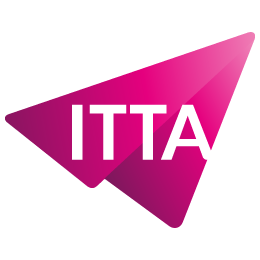Home > Trainings > Development > Introduction to Data Persistence with Hibernate
Hibernate provides a robust and proven solution for managing Java object persistence.
Its success within the developer community has led to its adoption in many enterprise projects.
This Hibernate training introduces the key concepts and essential practices for implementing effective object-relational mapping.
A practical and progressive approach
The Hibernate training is designed for developers and project managers who want to understand and apply object-relational persistence.
Each module introduces a core concept, from project setup to the optimization of caching and queries.
You will also learn how to manage transactions, complex associations, and advanced domain models.
Module 1: Understanding object / relational persistence
Module 2: Starting a project
Module 3: Domain models and metadata
Module 4: Mapping persistent classes
Module 5: Inheritance and custom types
Module 6: Mapping collections and entity associations
Module 7: Advanced entity association mappings
Module 8: Legacy databases and custom SQL
Module 9: Working with objects
Module 10: Transactions and concurrency
Module 11: Implementing conversations
Module 12: Efficient object modification
Module 13: Retrieval optimization and caching
Module 14: Querying with HQL and JPA QL
Module 15: Advanced query options
Module 16: Building and testing layered applications
Module 17: Introduction to JBoss Seam
Managing data persistence is one of the major challenges in Java application development.
Relational databases remain central, but their integration with the object-oriented world
requires solid expertise. Hibernate simplifies this relationship by automating the mapping
between objects and tables. A Hibernate training course helps acquire this strategic skill
and ensures the reliability of professional applications.
Hibernate is not just a replacement for traditional SQL queries. It introduces a set of
mechanisms that make developers’ daily work easier. Automatic transaction management,
caching, and optimized data access all improve productivity and reduce the risk of errors.
Learning how to use these features correctly provides a decisive advantage in projects where
performance is critical.
Mastering Hibernate is now a valuable asset for any Java developer. Many companies still rely
on complex relational systems. Professionals capable of designing robust solutions with
Hibernate are therefore highly sought after. A specialized training program goes beyond
technical learning: it also develops the ability to design reliable, scalable, and
maintainable software architectures.
Hibernate training emphasizes the practical application of concepts. It covers common
situations such as managing entities, inheritance, relationships between objects, and
optimizing data retrieval. Participants also learn how to adapt Hibernate to legacy databases
and customize SQL queries. This hands-on approach ensures skill development that can be
directly applied to enterprise projects.
Another key aspect covered is performance. Hibernate offers several data fetching strategies
and advanced caching options. Poorly configured, these features can slow down an application.
Properly used, they ensure a significant performance gain. Knowing how to adjust these
parameters, choose the right models, and understand concurrency mechanisms is a critical
skill taught in the training.
The value of Hibernate training is not limited to learning the basics. It provides a complete
overview of possible uses of the framework, including advanced cases. Participants learn to
handle collections, use complex associations, work with JPA, and even integrate Hibernate
into modern architectures using complementary frameworks such as Spring. This holistic
approach prepares professionals to address a wide variety of contexts.
Choosing to attend a Hibernate training course is an investment in expertise that remains
essential in the Java ecosystem. Enterprise projects require reliable and sustainable
solutions capable of handling large volumes of data. Developers trained in Hibernate gain a
competitive advantage for career progression, increase their employability, and meet the
concrete needs of the market.
What are the prerequisites for taking a Hibernate training course?
It is recommended to know Java and have a basic understanding of SQL and relational
databases.
Is Hibernate still used today?
Yes, Hibernate remains a standard in the Java ecosystem. It is widely adopted in enterprise
projects thanks to its robustness and compatibility with JPA.
What is the difference between Hibernate and JPA?
JPA is a specification, while Hibernate is an implementation. Hibernate provides extended
features beyond the JPA standard.
What are the benefits of caching with Hibernate?
Caching reduces direct access to the database, improves performance, and lowers server load.
Can Hibernate be integrated with Spring?
Yes, Hibernate integrates seamlessly with Spring, making configuration and transaction
management much easier in modern Java projects.

Nous utilisons des cookies afin de vous garantir une expérience de navigation fluide, agréable et entièrement sécurisée sur notre site. Ces cookies nous permettent d’analyser et d’améliorer nos services en continu, afin de mieux répondre à vos attentes.
Monday to Friday
8:30 AM to 6:00 PM
Tel. 058 307 73 00
ITTA
Route des jeunes 35
1227 Carouge, Suisse
Monday to Friday, from 8:30 am to 06:00 pm.